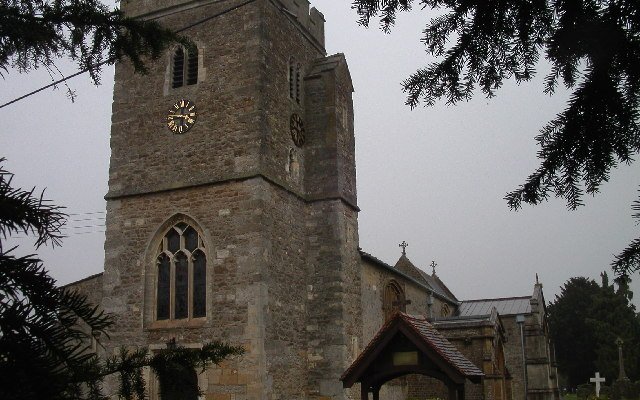The Great Fire of Drayton
23 October 2025
In April 1780, a devastating fire ripped through the village of Drayton, destroying almost the entire High Street and spreading detritus for miles around. The tragedy became known as the 'Great Fire of Drayton'.
The literal spark that ignited the fire came from bucket of wood-ash that was discarded behind a house close to the Wheatsheaf pub. Wind blew the sparks onto the thatched roof of a nearby cottage which caught fire.
In the dry and windy conditions, the fire spread rapidly across the thatched roofs of nearby properties, and before long the village was ablaze. The fire raged up the High Street, spreading nearly half a mile in the space of 15 minutes and sparing only a few lucky properties.
In about two hours, 35 dwelling-houses, 24 barns, 14 wheat ricks and all the hay ricks, the stabling etc were levelled with the ground.
Gloucester Journal, 24 April 1870
Only a few buildings were spared, including the church which survived despite the houses adjoining the churchyard being destroyed.
One family managed to save their property by climbing a ladder at the windward end and beating out the sparks by hand as they landed on their thatched roof, almost smothering themselves in the process.
Bright sparks of Combe
The above reminds me of something I once witnessed one Bonfire Night in the village of Combe in West Oxfordshire. As was traditional, a huge bonfire had been lit on the village green and soon sparks from it were blowing worryingly in the direction of a nearby thatched cottage.
The owner clearly wasn't taking any chances, and was sat on the apex of the roof with a hosepipe in hand, carefully hosing down any sparks that landed on his roof!
Considering the massive destruction caused by the fire, it's perhaps lucky that there was only one death, an unfortunate woman who suffered severe burns and died the following day.
If the fire had happened at night then the death-toll would have surely been a lot higher, but thankfully in daylight the alarm was raised quickly and most were able to get to safety before their homes were consumed.
The damage was estimated to have totalled £6,300, a huge sum at the time.
A charitable contribution for the relief of the unhappy suffers by fire at Drayton, Berks, is humbly solicited.
Reading Mercury, 22 May 1870
The fire left many of the inhabitants of the village with little more than the clothes they stood up in, and there was a general outpouring of sympathy that spread beyond the local area.
An appeal was opened for charitable donations to help the inhabitants of Drayton rebuild their lives. It's hard to tell how much was raised, but it doesn't sounds like the funds were very swiftly disseminated.
A post appeared in the Oxford Journal from the 10 March the following year encouraging those who had raised money to deliver their final amounts to Messrs Tompkins, Bankers, Abingdon so that it could be spread among the needy of Drayton.
It seems that some unscrupulous people may have taken advantage of the disaster to make a few quid. The Reading Mercury of 22 May 1780 warns its readers to not be fooled by 'divers idle and disorderly persons [who] wander about and solicit charity under the false pretext of being sufferers by Drayton fire'.
Firehooks at East Hagbourne
Fires destroying thatched homes were not an uncommon occurrence. In fact many villages had 'firehooks', long poles with hooks on the end, stored at their church which could be used to pull down flaming thatched roofs to prevent fires spreading.
However, these fire-fighting measures proved no match for the fire that ripped through the nearby village of East Hagbourne in 1659, destroying almost the entire village. According to some sources, only the village church of St Andrew's remained standing, and Charles II issued a proclamation calling for financial support.
Sources
- Drayton Chronicle, June 2007 (pdf)
- Gloucester Journal, Monday 24 April 1780
- Reading Mercury, Monday 22 May 1780
- Oxford Journal, Saturday 10 March 1781






